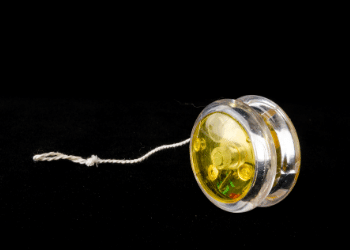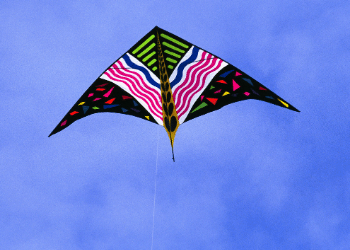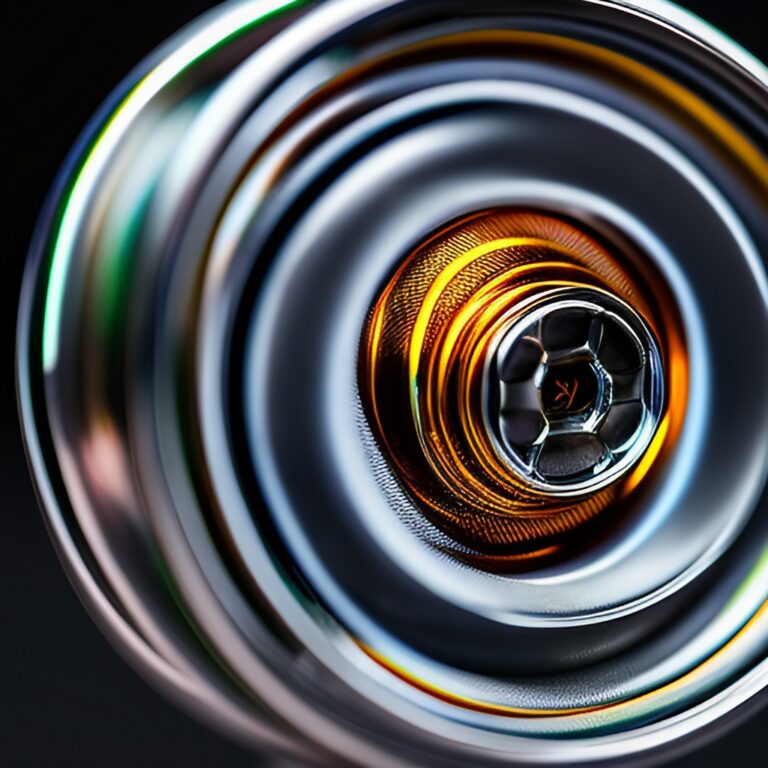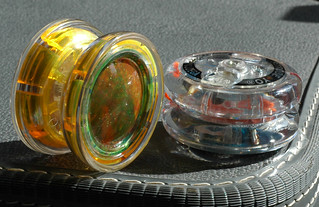
One of the most frequently asked questions from new yoyo players is, what kind of yoyo should I get. This article will cover the many factors that you must consider when buying a new yoyo.
Now, when it comes to the common types of yoyo – to keep it simple, we’ll focus on the 3 most important ones; the shape, the axle, and the response, all of which have their own set of yoyos types.
Types Of Yoyos:
- Shape
- Axle
- Responsiveness
What Are The Common Types of Yoyos
When it comes to choosing which yoyo type to buy, there are 3 main categories to choose from and each has its own set of yoyos.
Please note that we choose these 3 main kinds because they’re not overwhelming for beginners, there are actually other shapes but with these 3 – they are the foundation and/or the easiest way to pick a yoyo.
Yoyo Shape
1) The Butterfly
This is the most popular shape as it gives you the widest of all the yoyo shapes while maintaining a slim axle, coming in a rounded form such as the Freehand 2 or a more flared shape such as the Yomega Firestorm.
Advantages:
- Due to its wide shape, it’s fantastic for single-handed string tricks
- Great for young players because the shape fits well into the hands
Disadvantages:
- Not good for looping tricks
- Not good for a complete beginner
2) The Imperial
The imperial shape is the complete opposite of the butterfly shape, it’s much more narrow – think of the imperial as a compact burger while the butterfly is more of a car’s rim (it’s where a tire is attached) or a pair of doorknobs.
Advantages:
- Fantastic for classic or beginner tricks
Disadvantages:
- Cannot be used for more advanced tricks
- Can be limited to beginner tricks
3) The Modified Shape
This shape is a hybrid between the Butterfly and the Imperial. The modified shape is similar to the Imperial shape except it has these rounded gaps or shells.
Advantages:
- Good for string tricks
- Fantastic for looping tricks
- Great for two-handed yoyo tricks
Disadvantages:
- Can be limited in certain tricks
- The feel itself can be weird for some yoyo players
Yoyo Axle
The axle is important to consider because this determines how long your yoyo will sleep. “Sleeping” means whenever your yoyo spins down at the bottom of the string. Sleeping is the foundation for all kinds of yoyo tricks.
It can be really frustrating if you get a yoyo and it used to be able to sleep and now, it no longer sleeps. It’s going to make learning a lot of tricks impossible to do if you can’t figure out how to get that right.
1) Fixed Axle Yoyo
A fixed axle means the axle itself and the sides of the yoyo are bound together meaning, when your yoyo spins at the bottom of the string, everything spins with it.
Advantages:
- Has a lot of friction between the axle and the string which makes it great for certain stricks
Disadvantages:
- Limited to a 10 to 20 sleeper IF you throw a good sleeper.
2) Transaxle Yoyo
The transaxle yoyo has one extra piece that sits around the main axle which allows you to get longer sleeper times, for example, 20 to 25-second sleepers.
Advantages:
- Has a lot of friction between the axle and the string which makes it great for certain stricks
Disadvantages:
- Limited to a 10 to 20 sleeper IF you throw a good sleeper.
3) Ballbearing Yoyo
The ball bearing systems for yoyos are the most complicated but also gives you the longest sleepers. Most yoyos that used a ball bearing system used at least 3 pieces which makes them, not very user-friendly nor beginner-friendly.
However, for more advanced yoyo players, you can do just about any yoyo trick you want, and will give you sleepers from 1 to 5 minutes, even more, depending on the yoyo.
The weight distribution can either be an advantage or disadvantage to you – as a beginner, our best advice is for you to try each type of yoyo in your hand while we recommend you start with a butterfly; it’s still up to you.
Yoyo Response
What we mean by your yoyo’s “response” system is how the yoyo comes back to your hand. Without getting too technical, there are yoyos that are Unresponsive and yoyos that are Responsive.
Responsive vs. Unresponsive
An Unresponsive yoyo means no matter how hard you tug, your yoyo will NOT come back to your hand. These types of yoyos are primarily designed for more advanced yoyo players – this is not recommended for a beginner.
What we would recommend to a beginner is a Responsive yoyo. These yoyos will still sleep but for the most part, they will come back to your hand with a simple, light tug. They’re fantastic for doing looping tricks which are essential to most beginner yoyo players.
The Bottom Line:
If you’re a complete beginner, start with a responsive yoyo.
Note: when you shop for your first yoyo, you will see many other features besides the 3 we mentioned above. However, the shape, the axle, and the response of your yoyo are the 3 most important features for all beginning yoyo players.
Best Types of Yoyos
There is no one best type. The best type of yoyo is going to depend on you and your abilities and what type of tricks you want to perform. Although, getting a high-quality yoyo is recommended no matter your skill level.
Beginners should go for responsive yoyos and intermediate and pros should dabble in unresponsive yoyos.
Here are some of the best yoyos for you:
Parts Of a Yoyo
Here are the parts of a yoyo:
- Body
- String
- Axle
- Ball Bearing
- Sidecap
- Clutch
- Weight Rings
Body
First, let’s start with the body. The body has two halves that twist together utilizing the axle. The body’s two halves can be made out of materials such as wood, metal, and the most popular one today, plastic.
There are many designs for the body.
However, most often the design is imperial which is used to do tricks such as butterfly, string tricks, looping tricks, and many other playing styles.
String
Second, the string is another part that is essential to the yoyo as, without the string, there is no yoyo.
Today’s yoyo has strings that are double twisted to coil over the axle or bearing at one end. The other end of the string is for the finger. The end of the finger has a slip knot that is tied around the finger for play.
The string was commonly made of 100% cotton; however, most recently it became more common to be made of 50% cotton and 50% polyester.
Thicker strings make the yoyo more responsive and return faster because it rubs the inner parts of the yoyo body’s sides. Strings that are thinner do the opposite.
Axle
The next part of a yoyo is the axle. Some may say that the axle is the most important part of the yoyo because it is the part that actually keeps the body which is made up of the two halves together.
Some yoyos consist of a design that can be taken apart so that players can fix any knots or issues around the axle.
Most of the older versions of the yoyos are known as one-piece designs as the two halves that make up the body are glued together; thereby, making any issues with the axle hard to fix (in fact if it could be fixed at all).
Today one can find companies that manufacture interchangeable axle components.
Ball Bearing
Another part of the yoyo is the bearing. The bearing is mainly used to reduce friction. There are two extreme states that a bearing yoyo can play. One is a thick lubricant being used to make the sleep time low to help with looping tricks.
The other is using a thin lubricant or very small amounts; or even, no lubricant at all (this is known as using a dry bearing). A dry bearing is used when doing a string trick play so that the yoyo will be less responsive.
Sidecap
The sidecap is called a pog at time and it is a round disc. It clips on the outside for sides as a creative design.
Clutch
The clutch helps the bearing to spin unhindered when thrown fast but also helps to activate the bearing to lock which stops the spinning so that it will return to the finger. The is considered a wonderful mechanism for beginners.
Beginners can actually concentrate on learning basic tricks and be concerned about the yoyo returning to the finger.
Weight Rings
And, the last part to discuss is the weight rings that are on some yoyos. These rings help improve spin times.
Conclusion
So in conclusion, there are 3 main types of yoyos that have subsets of their own. The shape, the type of axle, and the responsiveness of the yoyo.
Responsiveness is the real indicator if you are new to yoyos. It will be the deciding factor for you.
Finding the right type of yoyo for you is somewhat tough but we hope we shared with you the adequate knowledge to get it done






Leave a Comment